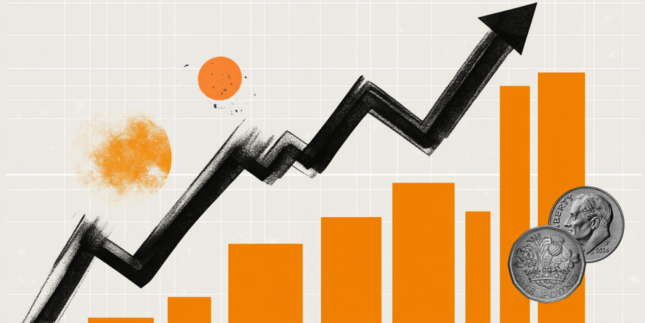- USD/CAD weakens near 1.3585 in Wednesday’s early Asian session.
- Firmer expectations of a Fed rate cut in September after the FOMC Minutes have exerted some selling pressure on the USD.
- The recent Canadian CPI supported the case for another rate cut by the BoC.
The USD/CAD pair edges lower to 1.3585 during the early Asian session on Thursday. The Greenback remains under selling pressure as the Minutes of the US Federal Reserve (Fed) opened the door for an interest rate cut at its September meeting,
According to the minutes of the Fed’s July meeting, “the vast majority” of participants observed that, if the data continued to come in about as expected, it would likely be appropriate to cut the interest rate at the next meeting.
Markets are now fully pricing in a September cut, which would be the first reduction since the emergency easing in the early days of the Covid crisis. A full percentage point worth of rate cuts is expected by the end of this year. The growing expectation of a Fed rate cut continues to undermine the US Dollar and US Treasury bond yields.
Elsewhere, the US Bureau of Labor Statistics announced on Wednesday that Nonfarm-Payrolls (NFP) growth revised down by 818,000 from March 2023 to March 2024, fewer than previously estimated.
On the Loonie front, the softer Canadian Consumer Price Index (CPI) inflation reports have triggered the speculation of another rate cut by the Bank of Canada (BoC). Traders continue to fully price in a 25 basis points (bps) cut in September, while an additional 50 bps of easing is priced in for the final two meetings of the year. This, in turn, might weigh on the Canadian Dollar (CAD) and help limit USD/CAD’s losses.
Canadian Dollar FAQs
The key factors driving the Canadian Dollar (CAD) are the level of interest rates set by the Bank of Canada (BoC), the price of Oil, Canada’s largest export, the health of its economy, inflation and the Trade Balance, which is the difference between the value of Canada’s exports versus its imports. Other factors include market sentiment – whether investors are taking on more risky assets (risk-on) or seeking safe-havens (risk-off) – with risk-on being CAD-positive. As its largest trading partner, the health of the US economy is also a key factor influencing the Canadian Dollar.
The Bank of Canada (BoC) has a significant influence on the Canadian Dollar by setting the level of interest rates that banks can lend to one another. This influences the level of interest rates for everyone. The main goal of the BoC is to maintain inflation at 1-3% by adjusting interest rates up or down. Relatively higher interest rates tend to be positive for the CAD. The Bank of Canada can also use quantitative easing and tightening to influence credit conditions, with the former CAD-negative and the latter CAD-positive.
The price of Oil is a key factor impacting the value of the Canadian Dollar. Petroleum is Canada’s biggest export, so Oil price tends to have an immediate impact on the CAD value. Generally, if Oil price rises CAD also goes up, as aggregate demand for the currency increases. The opposite is the case if the price of Oil falls. Higher Oil prices also tend to result in a greater likelihood of a positive Trade Balance, which is also supportive of the CAD.
While inflation had always traditionally been thought of as a negative factor for a currency since it lowers the value of money, the opposite has actually been the case in modern times with the relaxation of cross-border capital controls. Higher inflation tends to lead central banks to put up interest rates which attracts more capital inflows from global investors seeking a lucrative place to keep their money. This increases demand for the local currency, which in Canada’s case is the Canadian Dollar.
Macroeconomic data releases gauge the health of the economy and can have an impact on the Canadian Dollar. Indicators such as GDP, Manufacturing and Services PMIs, employment, and consumer sentiment surveys can all influence the direction of the CAD. A strong economy is good for the Canadian Dollar. Not only does it attract more foreign investment but it may encourage the Bank of Canada to put up interest rates, leading to a stronger currency. If economic data is weak, however, the CAD is likely to fall.
Information on these pages contains forward-looking statements that involve risks and uncertainties. Markets and instruments profiled on this page are for informational purposes only and should not in any way come across as a recommendation to buy or sell in these assets. You should do your own thorough research before making any investment decisions. FXStreet does not in any way guarantee that this information is free from mistakes, errors, or material misstatements. It also does not guarantee that this information is of a timely nature. Investing in Open Markets involves a great deal of risk, including the loss of all or a portion of your investment, as well as emotional distress. All risks, losses and costs associated with investing, including total loss of principal, are your responsibility. The views and opinions expressed in this article are those of the authors and do not necessarily reflect the official policy or position of FXStreet nor its advertisers. The author will not be held responsible for information that is found at the end of links posted on this page.
If not otherwise explicitly mentioned in the body of the article, at the time of writing, the author has no position in any stock mentioned in this article and no business relationship with any company mentioned. The author has not received compensation for writing this article, other than from FXStreet.
FXStreet and the author do not provide personalized recommendations. The author makes no representations as to the accuracy, completeness, or suitability of this information. FXStreet and the author will not be liable for any errors, omissions or any losses, injuries or damages arising from this information and its display or use. Errors and omissions excepted.
The author and FXStreet are not registered investment advisors and nothing in this article is intended to be investment advice.
Recommended content
Editors’ Picks

AUD/USD: Strong resistance lies at 0.6300
The marked sell-off in the US Dollar allowed AUD/USD to regain strong upside traction and reach multi-day highs in the area just below the key 0.6300 barrier at the beginning of the week.

EUR/USD: Bulls need to clear 1.0400 on a convincing fashion
In line with the rest of the risk-associated complex, EUR/USD managed to regain marked buying pressure and flirted with the area of three-week highs around 1.0430 on Monday.

Gold remains focused on all-time highs
Gold stays in positive territory above $2,700 on Monday as the improving risk mood makes it difficult for the US Dollar to find demand. Markets await US President Donald Trump's speech at the inauguration ceremony.

Solana Price Forecast: Are US traders dumping Bitcoin and XRP for SOL?
Solana (SOL) price stabilized near the $250 support level on Monday, having declined 10% from its all-time high over the last 24 hours.

GBP/USD stays defensive below 1.2200, awaits Trump 2.0
GBP/USD struggles to gain traction and trades slightly below 1.2200 in the second half of the day on Monday. Markets' nervousness ahead of US President-elect Donald Trump's inauguration drag the pair lower despite a broadly weaker US Dollar.

Trusted Broker Reviews for Smarter Trading
VERIFIED Discover in-depth reviews of reliable brokers. Compare features like spreads, leverage, and platforms. Find the perfect fit for your trading style, from CFDs to Forex pairs like EUR/USD and Gold.